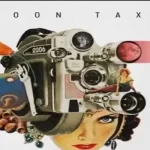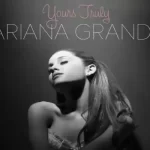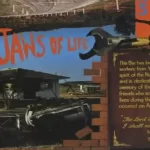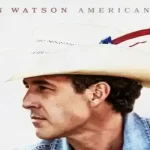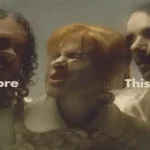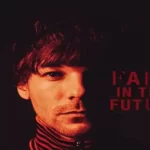Funk music is a genre of popular music that originated in the United States in the late 1960s. It is known for its rhythmic and danceable qualities, incorporating elements of soul, jazz, and rhythm and blues. Funk music is characterized by its syncopated rhythms, prominent basslines, and a strong emphasis on the groove. In this in-depth exploration of funk music, we will examine its history, key artists and songs, its characteristics, stylistic origins, cultural influences, derivative forms, and provide answers to frequently asked questions about this genre.
Funk Music Songs
Funk music boasts a rich catalog of influential and popular songs. From the iconic “Super Freak” by Rick James to James Brown’s “Get Up (I Feel Like Being a) Sex Machine,” funk songs are recognized for their infectious energy and irresistible rhythms. Other notable funk songs include “Give Up the Funk (Tear the Roof off the Sucker)” by Parliament, “Brick House” by The Commodores, and “Flash Light” by Parliament. These songs showcase the driving basslines, tight horn sections, and powerful vocal performances that are hallmarks of funk music.
Funk Music Artists
Numerous artists have made significant contributions to the development and popularity of funk music. James Brown, often referred to as the “Godfather of Soul,” played a pivotal role in the emergence of funk with his groundbreaking hits and dynamic stage presence. Other influential funk artists include
| Artist Name | Notable Works |
|---|---|
| James Brown | “Get Up (I Feel Like Being a) Sex Machine,” “Papa’s Got a Brand New Bag” |
| George Clinton | “Flash Light,” “Atomic Dog” |
| Sly and the Family Stone | “Thank You (Falettinme Be Mice Elf Agin),” “Dance to the Music” |
| Parliament-Funkadelic | “Give Up the Funk (Tear the Roof off the Sucker),” “One Nation Under a Groove” |
| Earth, Wind & Fire | “September,” “Shining Star” |
| Kool & the Gang | “Jungle Boogie,” “Get Down on It” |
| The Meters | “Cissy Strut,” “Look-Ka Py Py” |
| Rick James | “Super Freak,” “Give It to Me Baby” |
| The Ohio Players | “Love Rollercoaster,” “Fire” |
| Prince | “Kiss,” “Purple Rain” |
| Tower of Power | “What Is Hip?,” “You’re Still a Young Man” |

Funk Music Examples
To further illustrate the diverse range of funk music, let’s delve into a few examples. “Papa’s Got a Brand New Bag” by James Brown showcases his innovative use of rhythm and syncopation. The track features a driving beat and a relentless horn section, setting the stage for the development of funk music. Another example is “Give Up the Funk (Tear the Roof off the Sucker)” by Parliament, which epitomizes the danceable and energetic nature of funk with its infectious groove and memorable chorus. These examples demonstrate the versatility and infectiousness of funk music.
Characteristics of Funk Music
Funk music possesses several distinctive characteristics that set it apart from other genres. One key characteristic is the prominent bassline, which serves as the foundation of the groove. Funk basslines are often intricate and rhythmically complex, driving the entire composition forward. Additionally, the use of syncopated rhythms creates a sense of tension and release, making funk music highly danceable. Horn sections, featuring trumpets, saxophones, and trombones, add a dynamic and powerful element to funk compositions. The vocals in funk are often soulful and energetic, with artists utilizing call-and-response patterns and expressive delivery.
Stylistic Origins
The stylistic origins of funk music can be traced back to several genres. Funk emerged as a fusion of soul, jazz, and rhythm and blues in the 1960s. It was heavily influenced by African-American musical traditions, such as gospel and the blues. The rhythmic complexity of jazz and the soulful vocal delivery of soul music played a significant role in shaping the sound of funk. Additionally, the use of electric instruments, such as electric guitars and synthesizers, contributed to the unique sonic landscape of funk music.
Cultural Origins
Funk music has deep cultural roots in African-American communities, particularly in the United States. It emerged during a time of social and political unrest, providing a platform for artists to express their experiences and challenge the status quo. Funk became a symbol of Black empowerment and pride, with its energetic and rhythmically-driven sound capturing the spirit of the civil rights movement. The genre’s cultural impact extended beyond the music itself, influencing fashion, dance styles, and popular culture.
Derivative Forms
Funk music has had a lasting influence on various genres and has served as a foundation for the development of derivative forms. One notable derivative is disco, which emerged in the 1970s and incorporated funk’s rhythmic elements into dance-oriented music. Hip-hop, another genre deeply rooted in African-American culture, drew inspiration from funk’s breakbeats and samples, forming the basis of early hip-hop music. Contemporary genres like neo-soul and R&B also draw from funk’s emphasis on groove and soulful vocals, adding a modern twist to the genre.
Frequently Asked Questions about Funk Music
What are some essential funk albums?
Some essential funk albums include “Mothership Connection” by Parliament, “Maggot Brain” by Funkadelic, “There’s a Riot Goin’ On” by Sly and the Family Stone, and “Stand!” by Sly and the Family Stone.
Who is considered the father of funk music?
James Brown is often regarded as the father of funk music due to his influential contributions and innovative approach to rhythm and groove.
Is funk music still popular today?
While funk music may not dominate the mainstream charts, its influence can still be felt in contemporary music. Many artists continue to incorporate funk elements into their compositions, keeping the genre alive.
Are there any modern funk artists?
Yes, there are modern funk artists who carry on the legacy of the genre. Some notable examples include Vulfpeck and Anderson.Paak, and Thundercat.
How did funk music influence dance styles?
Funk music’s infectious groove and energetic rhythms influenced various dance styles, including popular funk styles such as P-Funk and the Electric Slide.
What role did funk music play in the civil rights movement?
Funk music served as a cultural expression and rallying cry during the civil rights movement, providing a platform for African-American artists to voice their experiences and promote social change.
How did funk music impact popular culture?
Funk music had a significant impact on popular culture, influencing fashion, dance, and the overall sound of contemporary music. Its energetic and lively nature continues to resonate with audiences worldwide.
Conclusion
Funk music is a dynamic and influential genre that has left an indelible mark on the musical landscape. From its iconic basslines to its infectious rhythms, funk continues to captivate listeners with its irresistible groove. With its roots in African-American musical traditions, funk has served as a platform for artistic expression and cultural empowerment. The genre’s impact can be heard in various derivative forms, and its legacy is carried on by modern funk artists. Funk music remains a testament to the power of rhythm and the celebration of life, ensuring its enduring relevance in popular music.


